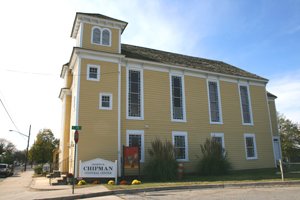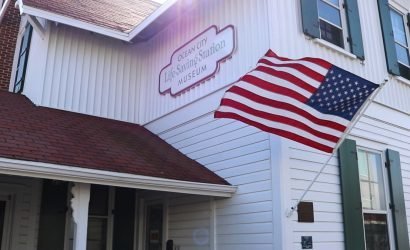Ah February, time for hugs and kisses, lots of snow and historically speaking, Black History Month. In celebration of this month we are spotlighting some of the important historical figures and places rooted in the Eastern Shore. We decided to begin our journey at the Charles H. Chipman Cultural Center in Salisbury.
The Chipman Center has been a place that we have been eager to visit for some time now. Every time we are heading down Route 13 and turn left onto Broad Street, we spot the yellow building with the beautiful, stained glass windows. We became so curious about the striking building that we did our research and soon planned our visit. Inside we found a wonderful historic tour accompanied by a great backstory.
It turns out that this historic site is one of the oldest wooden church structures on Delmarva. The Chipman Center began as a worship site in a meadow where slaves would congregate for sermons. In 1837, before the Civil War, five freemen bought the area from William Williams and built a small wooden structure to continue worship services.
Soon construction began to create a one story church in its place. The building was officially named the African Methodist Church and informally it was called the Church on the Hill. During the time that this church was built, not only had the Civil War not come into existence yet but neither had Wicomico County. It was not until 1867, when the building was 30 years old, that the county that it now stands in was created.
After the Civil War, the church was used as a day school for children. Because it had been illegal to educate slaves before this time, the church became one of the first school houses in the area for children of former slaves. In 1880, the Marshall of D.C., also known as Frederick Douglass, came to raise funds to build the second floor of the building. This Eastern Shore native’s contribution to the building helped lead to the eventual completion of the Federal-style church in 1886.
During construction, the building’s name was changed to John Wesley Episcopal Church. Some years later, the church was abandoned when the congregation moved to a different site. After being vacant for some time, Charles Chipman and his wife decided to buy the building to show its rich history and contributions to the Eastern Shore. Dr. Chipman was a notable person during his time and worked as a principle of a local high school for 46 years, including during segregation.
Today the Chipman Center stands as a beautiful architectural reminder of black history and its rich cultural contributions to the Shore. Inside, many artifacts such as masks, instruments and tools are on display to give visitors a glimpse at life in the past. The building is also used as a banquet hall and can be rented out for ceremonies and gatherings. We at ShoreBread think this could be a great spot for two history buffs to tie the knot while amidst relics of our regions past.
Until next time…








